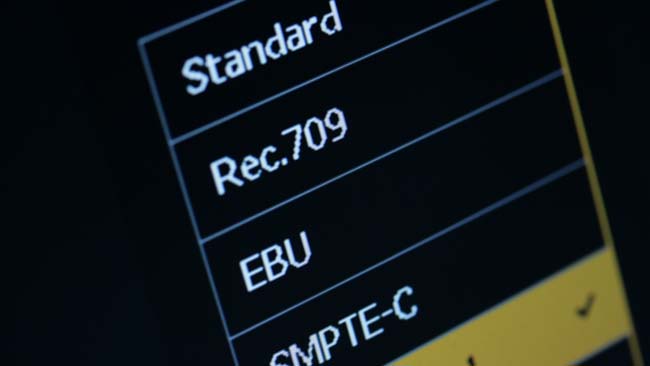
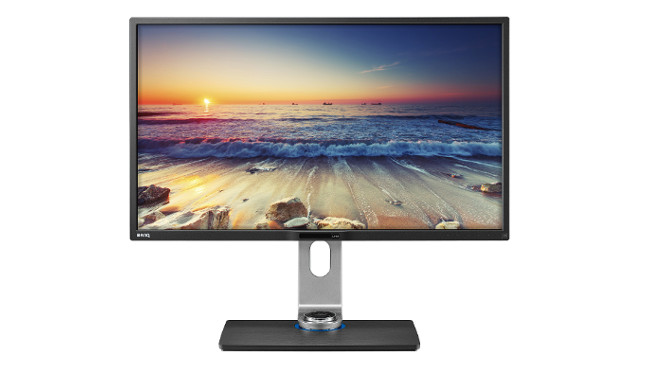 BenQ PV3200PT 32 inch UHD display
BenQ PV3200PT 32 inch UHD display
RedShark Review: an in-depth look at the Technicolor-certified BenQ PV3200PT, a UHD display which may offer stiff competition to other options in its $1500 price bracket.
4K resolution is a lovely thing. In the best case, it provides sufficient resolution to record the most subtle photographic choices made by filmmakers. It provides spare resolution for postproduction effects and corrections without visible degradation. In the most prosaic circumstances, it even serves to silence people who like to criticise digital cinematography on the basis that it lacks the sharpness of 35mm film. No interpositive process ever put more than about 1.5K on a cinema screen. 4K (or thereabouts) is a good thing – even too much of a good thing, as set decorators and makeup artists might complain.
As with any high-quality product, however, the rigours of creating it to the required standard demand much of both people and technology. We've spoken before about the issues of field monitoring even HD images. The tablet market has given us seven-inch displays of full HD resolution, which is only useful to someone who's extremely close to the display. To really see what's going on, it's necessary to lean in with a magnifying glass and such is also the case with 4K displays, even on displays as large as 24 inches.
![]() A closeup reveals fairly conventional rectangular RGB subpixels.
A closeup reveals fairly conventional rectangular RGB subpixels.
Computer monitors, as well as displays intended for tablets and phones, can also create problems with colorimetry. By default, most such displays can be assumed to be (an attempt at) sRGB, which uses the same red, green and blue primaries as Rec. 709. However, the brightness handling is different and displaying a 709 image on an sRGB display will result in errors in shadow brightness. This is to say nothing of more recent colour standards, such as Rec. 2020, and production-related things like DCI-P3. Rec. 2020, in particular, is relevant, given its relationship to UHD images, and it's been been difficult to get displays to do any of these things without spending big money on high-end options.
Crossover appeal
BenQ's PV3200PT is a nice option for a desktop display on a workstation, but the company describes it as a video postproduction monitor, too. As a 32-inch panel, it's big enough for judging critical focus on UHD images without the need for superman's super-vision. It also supports Rec. 709 colour, with 100% coverage claimed. There are also options for EBU or SMPTE-C primaries, although they are not relevant for most HD productions.
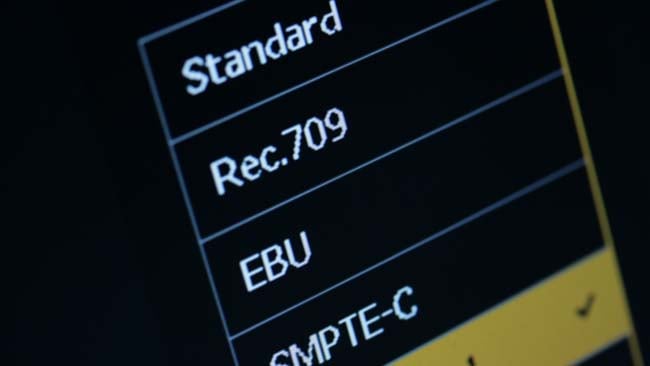 The presence of a Rec. 709 preset on what's ostensibly a computer monitor is a welcome development.
The presence of a Rec. 709 preset on what's ostensibly a computer monitor is a welcome development.
It would, naturally, have been nice to see options for Rec. 2020 and DCI-P3, as are supported by the vastly more expensive Eizo CG318, but there are genuine technical reasons that's difficult. As we've said, sRGB, as used by computers, and Rec. 709 use the same primary colours, so the dyes in the liquid crystal panel itself don't need to change. An sRGB panel can display a Rec. 709 picture accurately with nothing more than a bit of mathematics. Conversely, both P3 and 2020 use very different primary colours, meaning that any attempt to electronically massage a P3 image for display on an sRGB panel would leave a lot of colours out of gamut and inaccurately displayed. It would have been nice to see this attempted, probably with a gamut warning to show where the problem colours are, but it's easy to understand why it wasn't.
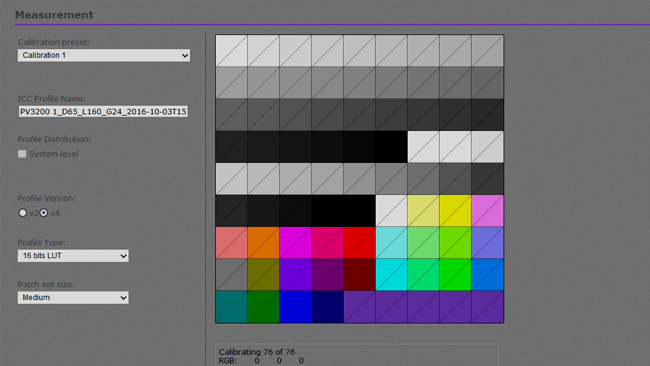 The included Palette Master Element software performs calibration.
The included Palette Master Element software performs calibration.
As with the BenQ SW2700PT we reviewed before, the PV3200 comes with the company's Palette Master Element software, which talks to devices such as X-Rite's i1 Display Pro probe (a separate purchase). The software is straightforward and comes with presets for calibrating the display to either sRGB or 709. It doesn't test a huge number of patches; in fact, in the fastest mode, it only tests full red, full blue and full green.
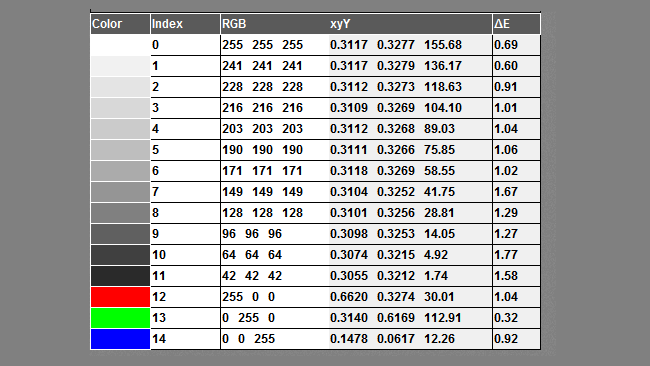 The display produces respectable delta-E numbers straight out of the box.
The display produces respectable delta-E numbers straight out of the box.
This is a quick test; the more complete tests try more colours.
Still, the results didn't seem to vary much depending on the number of patches tested, which may be something to do with the fact that the monitor under test only has about 25 hours on it. A verification pass with the largest patch set suggests that the display has very respectable colorimetry out of the box, with delta-E values exclusively below 2. The overall approach is clearly based on the company's experience in the photographic market and the software generates ICC colour profiles. There is no facility to apply arbitrary user or technical LUTs, which is something that BenQ might want to consider, in order to increase the value of its offering to video post people.
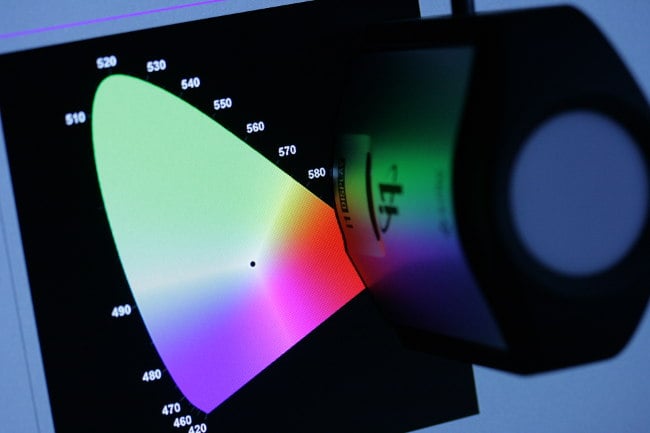 X-Rite's i1 Display Pro probe is compatible with the software.
X-Rite's i1 Display Pro probe is compatible with the software.
Performance and usage
So, it's a big UHD panel with calibration and video colour modes that costs £1000, which is an interesting proposition. Imaging performance is generally good. Colour shift is low and generally slightly toward the blue when the panel is viewed from a sharp horizontal angle, with only slight darkening visible in the vertical axis. Like all liquid crystal displays, the PV3200 is clearly at its best when viewed from head-on, but the IPS panel is as good as anything else in the same sort of price range. The sheer size of the thing means that there's occasionally a need to lean back to avoid a small degree of vignetting. If you're one or one-and-a-half screen heights away, then you're looking at the corners at a significant angle.
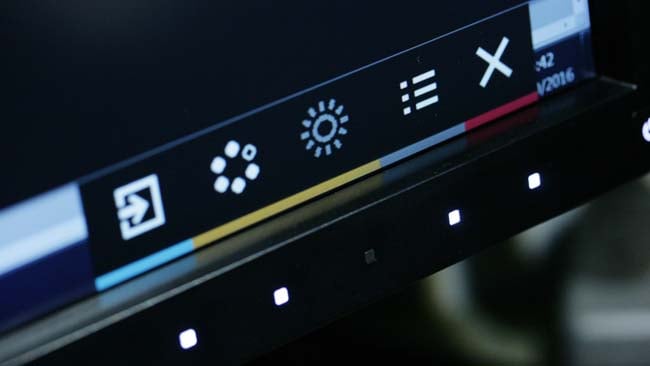 The capacitive touch pads are OK, but the menu itself is a bit sluggish.
The capacitive touch pads are OK, but the menu itself is a bit sluggish.
The simple black bezel is quite appropriate for a professional video display. About the only significant downsides are ergonomic and they're not much to write home about. The menu interface is sluggish to react to the capacitive buttons at the lower right, although the little circular plug-in keypad is a nicer alternative regardless. The DisplayPort and HDMI inputs face horizontally out of the right-hand side, making for difficulties with cable routing if you happen to have a rack-mounted workstation that's to the left of the display. There's no Adobe RGB, but that's not terribly useful for video people in any case. The only real misfeature is that the HDMI input is only version 1.4. The slightly more expensive HP DreamColor Z32x, which is otherwise of similar capability, has offered a single HDMI 2.0 port for over a year, but 4K HDMI signals on the PV3200 are limited to 30fps. It's unlikely to bother many people, since, as a video monitor, rates above 30fps are rare. As a desktop monitor, DisplayPort is a more common choice, but this is not really ideal on a £1000 display.
 The HDMI 1.4 input is limited to 30fps at 4K, although there are two DisplayPort connectors as well.
The HDMI 1.4 input is limited to 30fps at 4K, although there are two DisplayPort connectors as well.
Still, the market for 4K panels in general has calmed down noticeably since early options, such as the Dell UP2414Q, which we talked about shortly after its introduction with reservations; it's too small and the off-axis viewing is poor. There's no question that modern IPS displays, such as the PV3200, solve those problems. What's less clear is how well they challenge the incumbent, which invariably means HP's DreamColor range, in the world of colour-accurate displays. The PV3200, with its Technicolor seal of approval and greater economy, provides that challenge quite convincingly.
Tags: Production


Comments